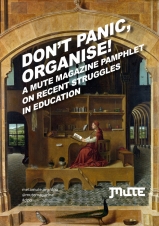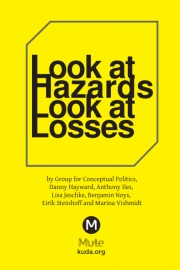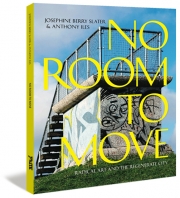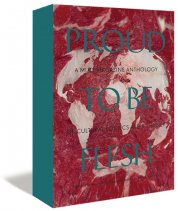Launch of Turner Prize 2009
ByBilly Durrant
Four Perspectives on the Launch of Turner Prize 2009
The Aesthetic PerspectiveHaving vacillated at the ugly end of the aesthetic spectrum for several years, this crop of Turner Prize entrants seem to have got their act together, at least as far as slickness is concerned. There is a precision to this year’s exhibition which finds its zenith in Lucy Skaer’s Black Alphabet – twenty-six skittles whittled from coal dust – and in Roger Hiorns’ particles from a combusted aeroplane engine neatly sprinkled on the floor. Even Enrico David’s surrealist fragments – from a Peter Andre look-alike to a Duchampian drumkit – are meticulously executed. Ironically enough, the work that most seems to be striving for beauty in the Kantian sense – Richard Wright’s filigree gold-leaf wall drawing – is so scarred by an unevenness in the plasterboard beneath as to disrupt its integrity. Integrity – now there’s a concept when exhibiting at Tate Britain; could the gold leaf perhaps have been attempting a comment on this? If so, shame about the faultline.
The Entourage’s PerspectiveIn each of the galleries, placed far less discreetly than any of the artworks, hovered the dealers representing these precious charges. Unabashed by degree show reticence, they occupied the appropriate space, fielding questions and boosting sales, leaving their artists free to roam the Duveen bar. The Janus-faced Fat Controller from Cabinet Gallery was there and adjacent Scots transgressed only slightly into each other’s territory. In this regard, Hiorns came out on top, with Artangel and Frieze attracted into his orbit and a cast of colourful characters confessing to joining him for dinner. Richard Wright, meanwhile, encircled by sycophantic black-clad wraiths en route to Shoreditch, will no doubt benefit from the presence of his long-standing friend, Charles Esche, on the jury. But it was Lucy Skaer who treated the situation with the most dignity, opting for Pizza Express on Millbank with her parents and close friends.
The Audience’s PerspectiveThose not immediately enmeshed with any of the exhibiting artists were nonetheless expected to take sides. Had it not been for the Eva Rothschild sculptures obstructing easy passage through the bar area, it would have been possible to imagine a re-enactment of Mike Reid’s Runaround as everyone sprinted to the appropriate corner when the music stopped. A literal equivalent was provided in the form of four grey badges with each of the artists’ names spelled out across them in white writing. The gauche pinned their favourites to their lapels, while the more circumspect toyed with their chosen ones in their pockets. Other hierarchies emerged too, encoded in the warmth of an embrace or in the furtive glance in search of prestigious company. Presiding over the sharp exodus expected of his guests, Nicholas Serota stood like an extra from the MI6 building across the river.
The Political PerspectiveEven without delving into the murky underworld of institutional critique, a number of contradictions force themselves to the surface of this exhibition to demand attention. A consideration of the artists’ means of production best illustrates this. Without wishing to fetishise the artisan, Richard Wright spent the best part of the two-week installation period tracing his delicate gold design on an uneven wall, while Enrico David’s sculptures look hand-made. In-keeping with the contemporary trend for assisted production, Roger Hiorns had help atomising his engine, but it is Lucy Skaer’s Leonora (Death) that troubles most in this regard. An elliptical drawing made up of tight spirals, this represents hundreds of hours of alienated labour by a hand other than the artist’s own, raising pertinent socio-economic questions about the creation of this work. But this is only the tip of a discussion about value in relation to the art world that is as gargantuan as the sperm whale whose skull Skaer allows us to glimpse behind a screen. Perhaps, in the end, it is this partial view of a leviathan that serves as the best metaphor.
Mute Books Orders
For Mute Books distribution contact Anagram Books
contact@anagrambooks.com
For online purchases visit anagrambooks.com






